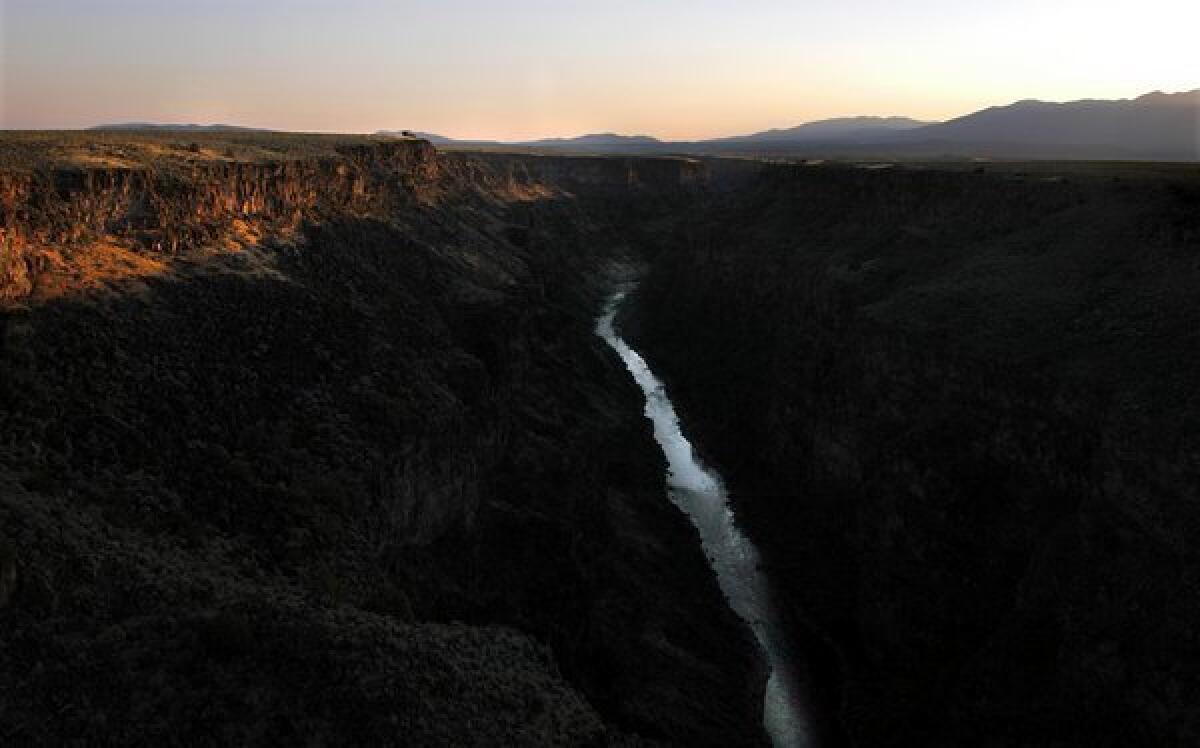New Mexico resident fights Army Corps over arroyo cleanup

- Share via
SANTA FE, N.M. — Peter Smith steered his silver Chevy TrailBlazer down a rough dirt road, rolling to a stop at the edge of a dry, sandy wash called the Gallina Arroyo. “Here’s the scene of the crime,” he said.
Two years ago, Smith cleaned out and graded a few hundred yards of the arroyo that winds through the 20-acre tract he and his wife, Francoise, own in the hills south of Santa Fe, not suspecting that he might be committing a federal offense.
But in June 2011, the U.S. Army Corps of Engineers sent a letter informing him that by failing to obtain a permit before blading the bed of the arroyo with his tractor, he had violated the Clean Water Act. The corps issued a warning but did not impose fines or penalties.
Although the arroyo only runs a few times a year, it is considered, in the formal language of the Clean Water Act, a “water of the United States” because it ultimately drains into the Rio Grande, about 25 miles away, the corps ruled.
Now, with the help of a libertarian-leaning legal nonprofit group from California that opposes what it views as government encroachment on individual liberties, the Smiths have sued, seeking to limit the agency’s regulatory powers.
“We hope to get them off of the Smiths’ property,” says Jennifer Fry, an attorney with the Sacramento-based Pacific Legal Foundation. “We think it’s a good vehicle for cutting back on the corps’ jurisdiction.”
If the case is decided in Smith’s favor by the 10th U.S. Circuit Court of Appeals, it would set a precedent, building on another clean-water regulatory case decided by the U.S. Supreme Court last March, Fry said. In that case, the court ruled that an Idaho couple could sue the Environmental Protection Agency over the agency’s finding that they improperly filled in a wetland on their property.
Kristen Skopeck, public affairs chief for the corps’ Albuquerque District, said she could not comment on the Smith case because of the pending litigation.
The Clean Water Act, passed in 1972, bars the discharge of pollutants into “navigable waters.” Since then, courts have ruled that the act also may cover tributaries draining into larger bodies of water — even so-called ephemeral streams like desert arroyos.
In its letter to Smith, the corps said that sediment from his stretch of the arroyo could have a negative effect on the river, home to the endangered Rio Grande silvery minnow. Removal of vegetation might also increase concentrations of toxic nitrates from fertilizers, the agency found.
Smith, 65, a surveyor, grew up in Vancouver, Canada, before moving to the Southwest. He and his French-born wife built their retirement home on a secluded site nestled amid stands of juniper and piñon trees.
A bark beetle infestation killed hundreds of the piñons, so Smith decided to cut and chip them to reduce fire danger. He also cleared trash that had been dumped in the arroyo — including old sofas and car seats.
Smith also removed the brush that was growing there and smoothed out 2- to 3-foot-deep eroded channels so he could maneuver his equipment.
The corps decided to investigate when a neighbor complained, he said.
“I’m worried about cleaning up the property,” Smith said. “I want to make it look good. I never thought the federal government would come into my retirement like this.”
After receiving the letter, Smith researched the issue online and even enrolled in a legal course at a local college before learning of the Pacific Legal Foundation, which agreed to handle his case free.
“I’m just waiting for the thing to be decided,” he said. “If I’m not too old and frail, I’ll get back to work.”
More to Read
Sign up for Essential California
The most important California stories and recommendations in your inbox every morning.
You may occasionally receive promotional content from the Los Angeles Times.










